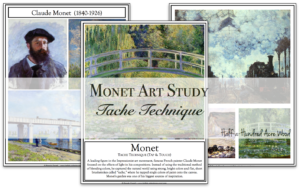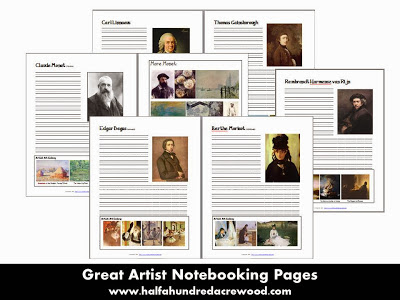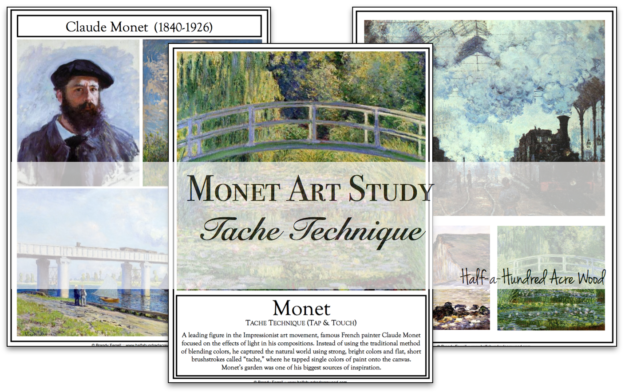
Have you ever read the book Ish? Well, Impressionism is just that – ish! Diving into Impressionistic art is a ton of fun, even for the non-artsy type like me. And it’s wonderful to explore art in a way that helps even the perfectionists let go a little bit. (Perfectionists? In our home? Believe it or not, yes. Speaking of perfectionists, Monet was one, too. He destroyed many of his paintings because he didn’t think they were good enough.)
Monet (along with many other Impressionists) used a technique called “tache,” which means stain, mark, or blotch in French. Tapping and touching an image onto the paper is fun and simple, and it doesn’t matter if the lines aren’t defined. In fact, undefined lines sort of define an impressionist painting. It was a joy to see my children explore their own ideas after we talked about Monet’s technique and studied his artwork with the Monet Picture Study pages (pictured above) in our Great Artists Picture Study Packet.
Monet Art Project – Tache Technique
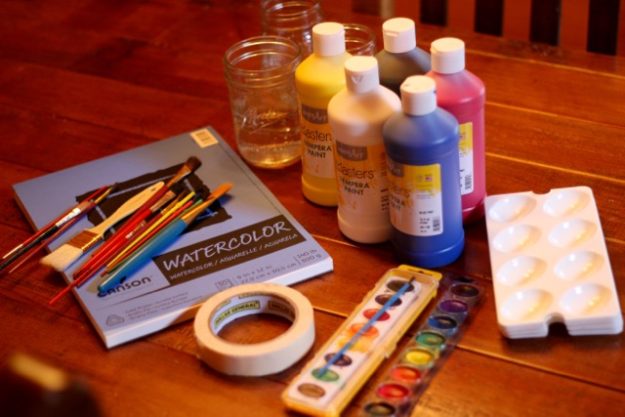
Supplies
- Monet Art Study Pages from the Great Artists Picture Study Packet
- Watercolors or Tempera Paints
- Paintbrushes
- Paint trays, egg trays, lids, or styrofoam plates (for paint)
- Watercolor paper
- Jar of water
- Masking tape
- Paper towels & plastic tablecloth
First, we studied the Monet Art Study Pages from the Great Artists Picture Study Packet. (Print out the Monet Art Study Pages and discuss with your student(s) if you would like to incorporate picture study.)
Our 8-year-old decided to paint a Monet haystack by blotching blue and yellow onto his “canvas” (i.e., watercolor paper) and followed it up by blotching some brown haystacks and some green bushes along the horizon line.

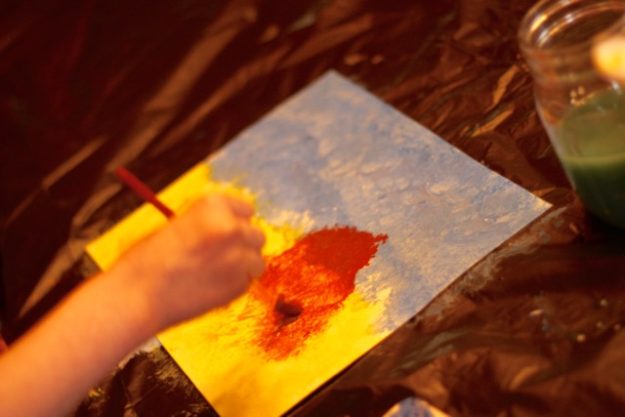
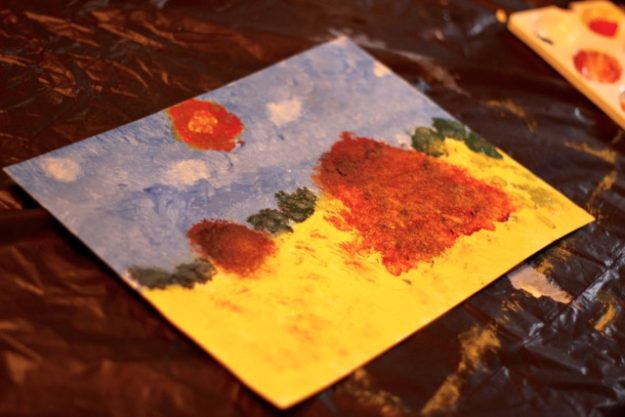
He tapped the brown paint on other parts of the yellow ground to give it a more natural look and then blotted some of the blue paint off the sky with a paper towel to make clouds.
Our 10-year-old wanted to make a bonfire. Not only did he include the Monet technique, but he really glopped it on like Morisot, too.
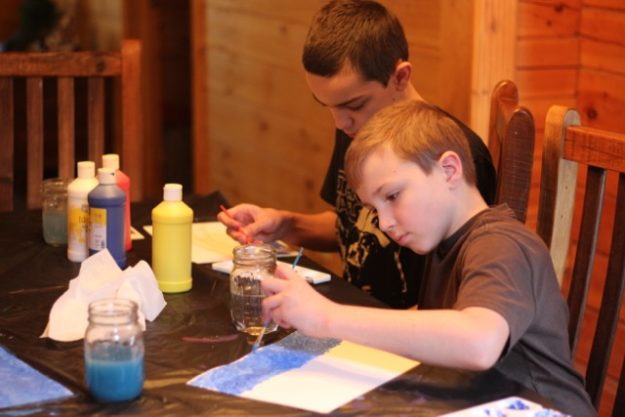
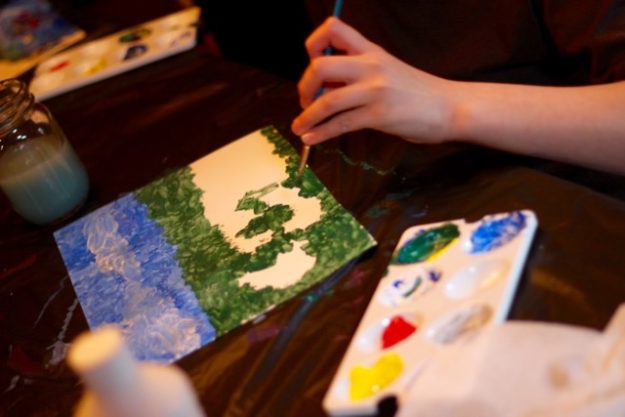
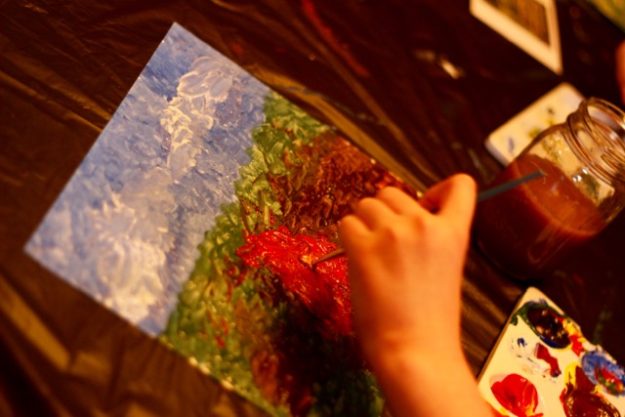
He started with the sky, using short brushstrokes of blue followed by white for clouds. He then painted the green grass, added earthy brown tones, and blotched a fire with smoke on top.
Our 13-year-old was interested in painting Monet’s water lily pond with Japanese bridge. First, he decided to use masking tape for the bridge.
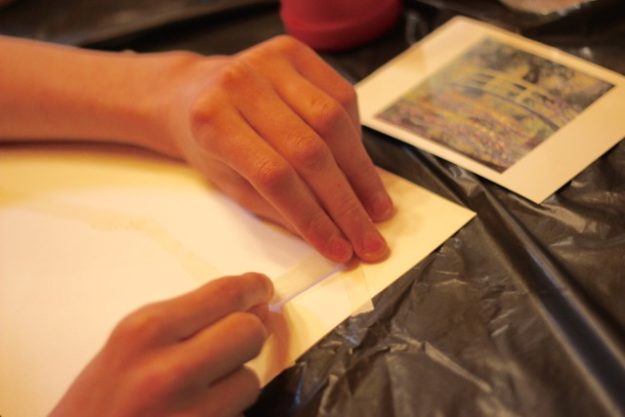
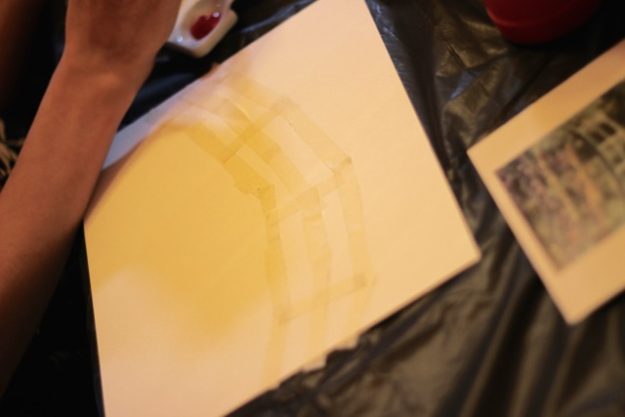
He then painted over the tape using some of the tips described in this Monet Water Lily Tache Technique Video. For the pond, he used short horizontal brushstrokes, and for the willows and greenery, he used vertical strokes to get a draping effect.
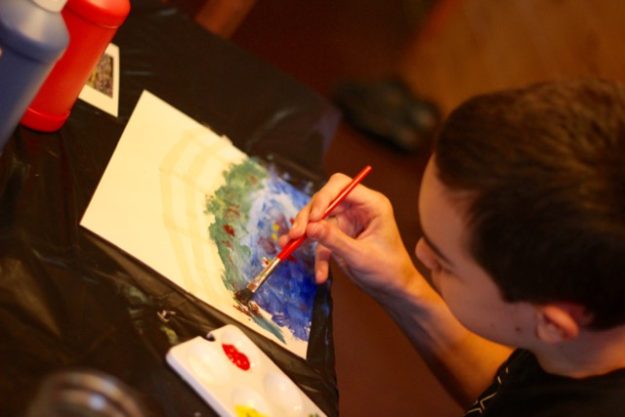
After finishing his painting, he removed the masking tape…
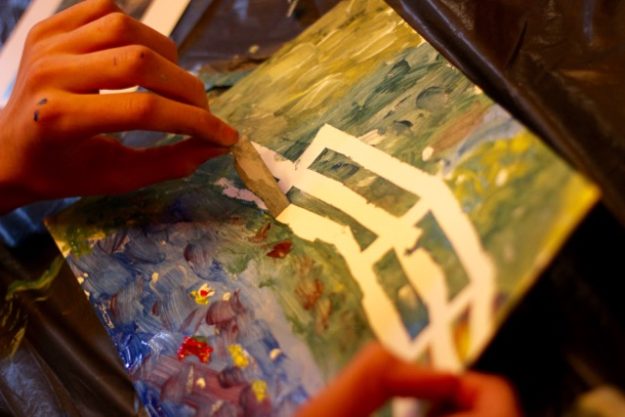
And that was it!
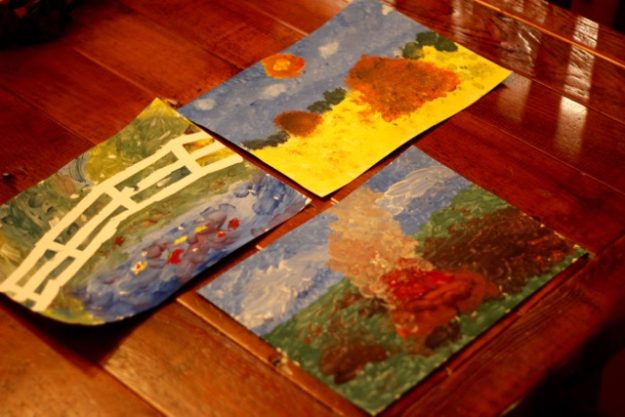
Haystack-ish, bonfire-ish, and water-lily-pond-ish. Three fairly quick art projects in the style of Monet!
Another way to expand upon this study is by using our Great Artist Notebooking Pages.
This post includes affiliate links. Please read our disclosure policy.

